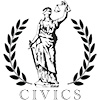| « Veterans Chuck Medals Towards NATO Conference | Photographing NATO Demonstrations: Projects and Protests » |
NATO-G8 Mon May 21 2012
Protests: Merging Means and Ends
Ugh. There's no good way to go about this, particularly so soon after the protests have settled and the fact and myth detritus is yet to be sifted through. Forensics at this stage are dicey.
I've never been keen on protests as purely symbolic gestures, though I generally don't criticize them, as speech acts have an (admittedly de minimis) inherent value in a republic. Protests qua protests typically serve as an internal act of organizing--honing organizational processes, identifying activists and leaders, developing messages, and serving the omnipresent need for "consciousness raising." But protests as pure speech acts are ephemera--or, maybe better, phenomena--that should express organizational acumen and announce a program to the public, rather than being the program itself. In other words, an organization's strength won't come from protests; protests should be an expression of strength built as a result of direct action contending with the status quo.
The protests that unfolded over the weekend, particularly over the last twenty-four hours, reflect the lack of a means-ends connection. Their listing from an identifiable objective, perceived lack of focus, and disparate employment of means are a function of not having an objective--even a grand one, like Gandhi's all-encompassing goal of an independent nation void of all forms of social violence--and thus being unable to calibrate their activities to that vision.
That said, the movement is nascent; it may well be that only through large-group action, even an amorphous action, can it begin to develop a vision through group consensus. That process will be a slow and meandering one, but its product may for that reason be a particularly adamantine one. What's more, considered as speech acts, protests warrants evaluation on the content of the speech; insofar as the messages communicated to the public were of perverse public priorities, the immorality of endless foreign and domestic war, and the insularity of global leadership, the speech is at least reasonable, at best commendable.
Means and ends in movement building are inextricably linked. This is by no means settled, and it was a point of contention between Gandhi and his critics, between Bayard Rustin and Malcolm X.
The issue is this: is there a disconnect between means and ends, such that a movement's tactics are only important inasmuch as they create conditions for implementing organizational goals? Or is the connection a necessary one--where the conditions arrived at will inextricably look like the tactics adopted?
This was Gandhi's key assertion for the 40+ years he spent helping build the swaraj movement in India in the face of critics from both his flanks who argued respectively for cooperation with the British for gradual independence, and armed resistance to the institutions of British repression to force independence. Gandhi consistently and passionately argued for decades that whatever independence India achieved would look like the struggle that achieved it. For a stable state where all classes could truly participate in their own governance, where British inhumanity would not merely be replaced by high-caste or military inhumanity, only firm and unwavering participatory and strategic nonviolence could be employed as a tactic.
Gandhi's nonviolence was not symbolic. It was real; it burdened the machinery of the British occupation, grinding it to a halt, while at the same time diluting the appetite for that occupation in the UK. Rustin and King's non-violence worked the same effect. A boycott of the transit system starves it of needed revenue, burdening the machinery of the state, while inspiring sympathy and empathy among the beneficiaries of that machinery. Both movements targeted often symbolic but still practical elements of the state's machinery. Gandhi marched into the salt works; Rustin organized sit-in at lunch counters.
Protesting NATO (as opposed to the G8 in particular) could only be a symbolic act inasmuch as the protest manifests as a march and speeches and street theater. The machinery of NATO as a super-national war-making enterprise was not at risk of being burdened. The protests were intended, presumably, as a speech act to highlight the error of continued war in the Middle East and the misplaced priority of war spending when so many human needs go unmet. But these are in their essence abstractions; calling attention to them has little salutary effect on its own, without an attendant strategic plan to interfere with their expression in the real world.
The Montgomery Bus Boycott is a good example; a more common one is a strike (and in fact, the boycott was organized by a union organizer). A strike manifests itself to the public as a "protest": we see people marching with placards chanting. But that protest is a phenomenon of a much more important organizational activity: the unanimous withholding of labor from an employer, causing a severe and potentially existential disruption to that business' operation.
Obviously, NATO is not going to be cowed or changed by protests, particularly localized protests, even if they're huge. NATO represents an incomprehensibly large network of relations between industry, media, and governments, representing hundreds of billions of dollars a year and determining the character of scores of national polities. So it's not unfair to be dubious of the efficacy of the NATO protests viewed in isolation. And to the extent that young activists pour their heart and soul into organizing them only to see little effect, they can also potentially be viewed as counter-productive for the long term.
This is where the Occupy movement in particular, but any number of reform or change movements generally, are stymied. Protest and direct action aren't interchangeable. Direct action has to come first, and it has to be what it sounds like: collective action meant to directly impact the machinery of the status quo.
 For Gandhi, this meant intense spiritual (many, including Gandhi at times, would say quasi-spiritual, or more personal than spiritual) training that develops individual fortitude and attitudes and thus necessarily modifies a society's relations: those between people of different classes, races, sexes, between employer and employee, between the governed and their governors. Or between the governed and their Gouverneur Morris.
For Gandhi, this meant intense spiritual (many, including Gandhi at times, would say quasi-spiritual, or more personal than spiritual) training that develops individual fortitude and attitudes and thus necessarily modifies a society's relations: those between people of different classes, races, sexes, between employer and employee, between the governed and their governors. Or between the governed and their Gouverneur Morris.
As you can imagine, this requires strategic, long-term thinking, with ends in mind and deviations very carefully considered. The main strength of "leaderless" movements like Occupy is their inclusive, consensus decision making. It inhibits the sclerosis that is otherwise an inexorable pathology of bureaucracy. That strength entails a weakness in the capacity for strategic, long-term thinking. The result will often be ephemera: protests qua protests that don't grow from resilient organizational direct action.
It's well known at this point that the Rosa Parks incident in Montgomery was planned to inflame the city's black community and spark the boycott. It was, in other words, planned. The idea was simple; find a hard-working person "beyond reproach" to bring into focus the injustice, and then organize aggressively to make the operation of that injustice impracticable. Obviously, today's activists aren't beholden to the models of the past--Student Non-Violent Coordinating Committee, Hind Swaraj. Central planning isn't a necessary condition for mass action and change. I certainly am not about to start giving an autonomous movement any sort of advice.
Skepticism (or heavily guarded optimism) are understandable however where there is a lack of strategic, articulated means-ends inter-relatedness. It's always appropriate to ask, "What? And to what end?" The more abstract the answer--"raise awareness," "be heard"--the more fleeting or superficial the results will be.
Consider this call to action that went out on the night of Rosa Parks' arrest in Montgomery:
[I]f Negroes did not ride the buses, they could not operate. Three-fourths of the riders are Negro....We are, therefore, asking every Negro to stay off the buses Monday in protest of the arrest and trial. Don't ride the buses to work, to town, to school, or anywhere on Monday.
This is a remarkably concrete form of direct action. The bus system--an institution that directly operated a form of injustice--is itself targeted. The means and ends are obvious; starve it of revenue to force it to change (sounds familiar). The follow-up organizing was intense, and incorporated new forms of media (radio, television) and traditional, interpersonal forms of communication (leafletting, church sermons) to bring it into effect. If it so happened (and I presume it did) that the participants in the boycott gathered at a bus terminal to express their grievances through speeches, signs, and songs, that was not the point; even without the protest, the agitation for change was happening and in a very material way.
The city of Chicago expended resources and Chicagoans were inconvenienced to accommodate the NATO protests. We can debate the value of the speech as speech; we should also debate the value of movements and protests as efficacious agents of change. These aren't necessarily the same thing. Ultimately, though, the speech and the agency have to become wedded, or the speech will keep hitting dead ends, until its content is discarded as facile and ineffectual. The actions a movement takes has to have that necessary connection to the way it expresses itself to the world. Those actions have to be designed as naturally resulting in the ends desired.
This debate, and it's not a new one, always reminds me of that famous scene in Robert Bolt's A Man for All Seasons, where Sir Thomas More is arguing with his hothead son-in-law Roper, who in encouraging More to defy the king in defense of the church, says he would happily strike down all the laws of the realm in pursuit of the devil:
And when the last law was down, and the Devil turned 'round on you, where would you hide, Roper, the laws all being flat?
The world we're left with after pursuing whatever injustice we perceive will be contoured by the pursuit itself.











